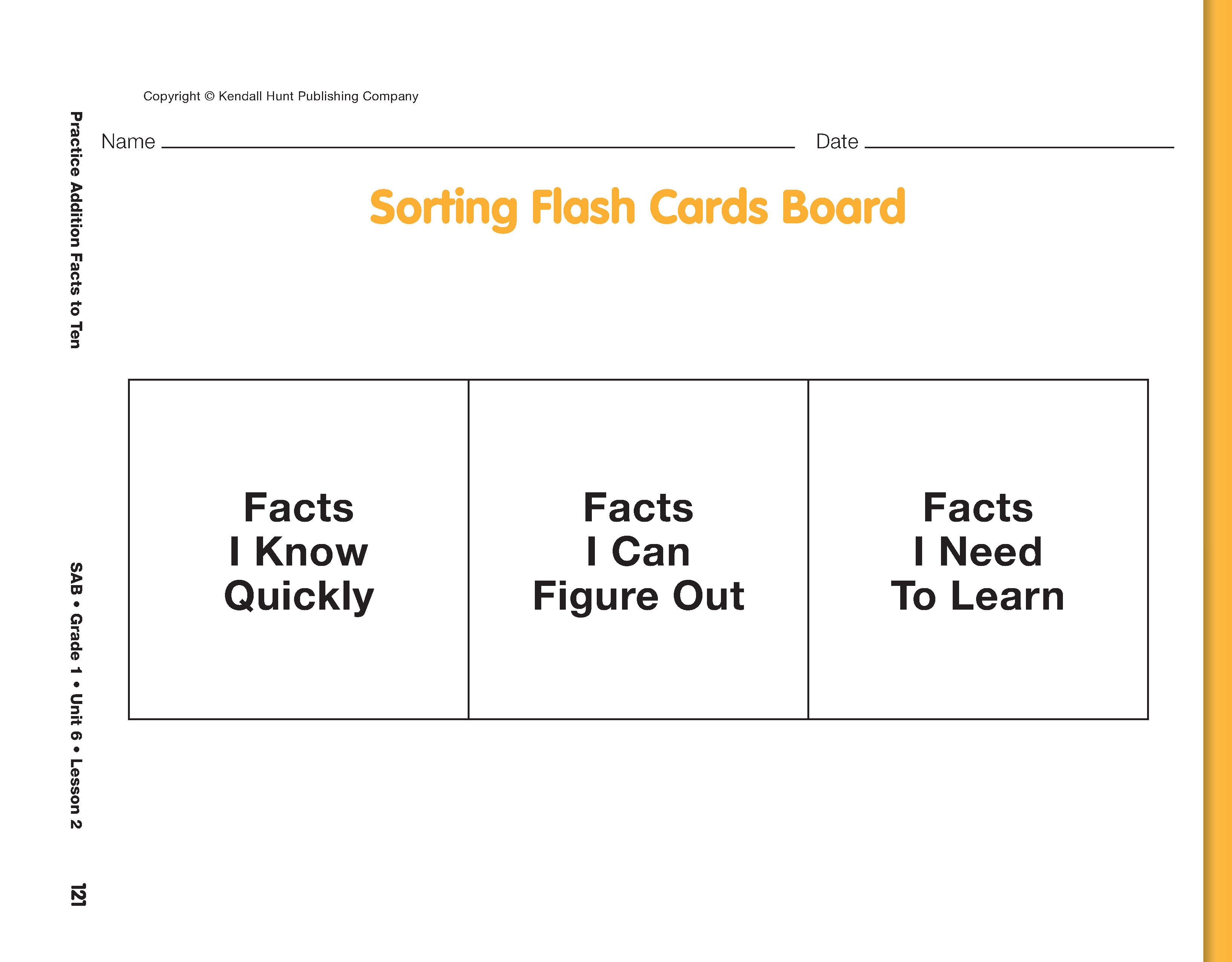Practice Addition Facts to Ten
Est. Class Sessions: 1–2Developing the Lesson
Part 1: Addition Flash Cards
Introduce the Addition Flash
Cards for Groups
A and B. Give each student a set of the
Addition Flash Cards for Groups A and B. Each student should also
have 10 connecting cubes and access to their desk number line.
Tell students that they will work with a partner and use these
cards to practice their strategies for adding two numbers. Direct
students to put their cards in a pile, face down in front of
them. Students then take turns flipping over one of their cards,
finding the answer to the problem, and describing the strategy
they used to their partner.
Observe students as they are working with their partner and listen to their explanations about how they solved the problem on their card, making note of the various strategies and tools used by students. After most of the student pairs have finished sharing their strategies for the flash cards with each other, but before everyone has finished, summarize your observations. The Sample Dialog illustrates a possible classroom discussion.
Practice with Flash Cards. Ask students to remove the Sorting Flash Cards Board page in the Student Activity Book. Display the Sorting Flash Cards Board and tell students they are going to practice their flash cards again with their partner but this time they will sort their cards into three piles using the sorting board. Use the demonstration set of flash cards to show students how they will sort their cards into three piles: Facts I Know Quickly, Facts I Can Figure Out, and Facts I Need to Learn.
To practice the addition facts and sort their cards, one student will turn over his or her cards one at a time, solving the problem on the card. Their partner will check to make sure their answer is accurate. The student will then decide whether it was a fact they knew quickly, a fact they had to figure out, or a fact they still need to learn. After the first student has practiced all of the cards, he or she should clip together all the cards in the Facts I Know Quickly pile and store all the cards in an envelope. The other student repeats the procedure with his or her cards. After each student has sorted his or her flash cards, they can work together to practice the facts in the Facts I Can Figure Out and Facts I Need to Learn piles.















